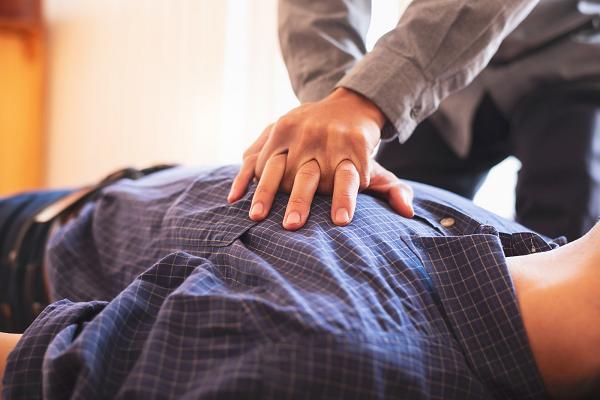What you should know about cardiac arrest
Published Monday, February 27, 2023

Responding fast can make the difference between life and death
February is Heart Month, a time to bring attention to the importance of cardiovascular health. Heart disease affects approximately 2.4 million Canadian adults, and is the second leading cause of death in Canada. Each year, an estimated 35,000 cardiac arrests occur in Canada.
Survival rates double if someone performs cardiopulmonary resuscitation (CPR) and uses an automated external defibrillator (AED). Recognizing the signs of cardiac arrest and responding fast can mean the difference between life and death.
Cardiac Arrest vs Heart Attack
Cardiac arrest is an electrical malfunction that stops the heartbeat, shutting down the heart. A person experiencing a cardiac arrest will collapse and be unresponsive. This is different from a heart attack, where a blocked artery slows or cuts off blood flow to the heart, but usually the heart continues beating. Typical heart attack signs are discomfort in the chest or upper body, shortness of breath, sweating, nausea and light-headedness. If you think you are having a heart attack you must call 9-1-1.
What causes cardiac arrest?
Some types of arrhythmia, an irregular heartbeat that can short circuit the heart’s electrical system, can cause cardiac arrest. About one quarter of heart attacks actually trigger cardiac arrest – either immediately or within an hour or two. Other rare contributors to cardiac arrest include drug overdose, major electrolyte abnormalities, or large clots that block flow to the lungs. In most cases the only way to correct a cardiac arrest is to deliver high quality CPR and a shock from a defibrillator.
Warning Signs
If you have fainted, a physician should evaluate you, as it may be a warning sign for a rhythm disorder that could cause cardiac arrest. Although fainting is a relatively common occurrence, if it occurs during physical activity, when swimming or from emotional excitement, it can be a warning sign of sudden arrhythmia death syndrome (SADS). Also, since heart attack can precede cardiac arrest, it’s critical to be aware of heart attack signs and get medical attention immediately. If you experience tightness in your chest, you should be aware that it isn’t necessarily from a pulled muscle.
If someone has a cardiac arrest:
- Phone 9-1-1 and shout for an AED.
- Perform CPR pushing hard in the centre of the chest and then allow the chest to recoil fully before pushing again. Try to push 100-120 times a minute (fast!).
- Use an AED if available. Apply the stickers to the person, turn the machine on and it will tell you what to do next.
Response time is critical
In cardiac arrest you typically have about five minutes to restore circulation. CPR can keep blood moving through the body for a short period. An AED delivers an electrical shock that can restore the heart’s rhythm. Performing CPR and using an AED until emergency medical services take over can double the chance of surviving a cardiac arrest.
To learn more about heart education and heart health tips including support, prevention and recovery, visit the Heart and Stroke Foundation website at https://www.heartandstroke.ca/.